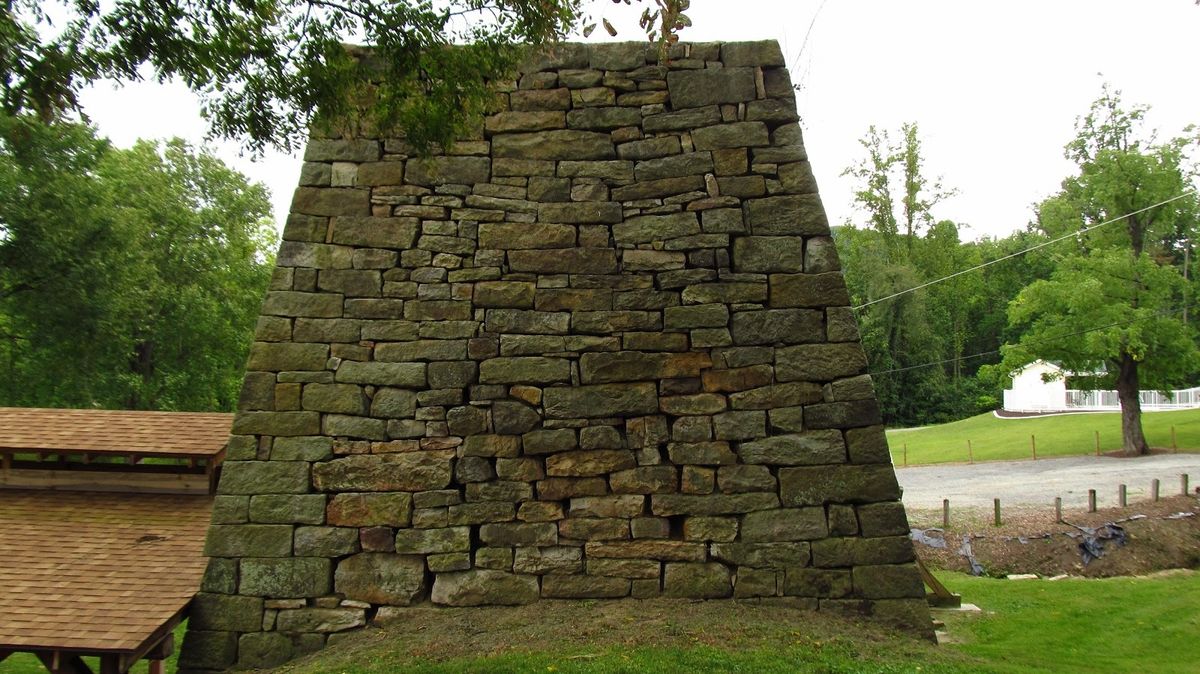Secrets Of Pennsylvania’s Lost Iron Furnaces

Have you ever wondered about the hidden history of Pennsylvania's lost iron furnaces? These relics from the 18th and 19th centuries played a crucial role in America's industrial growth. Tucked away in forests and valleys, they now stand as silent witnesses to a bygone era. Visiting these sites offers a unique glimpse into the past, where you can almost hear the clanging of metal and feel the heat of the forges. Whether you're a history buff or just love exploring off-the-beaten-path locations, these forgotten furnaces provide a fascinating adventure. Ready to step back in time and uncover the secrets of Pennsylvania's iron industry?
Secrets of Pennsylvania's Lost Iron Furnaces
Pennsylvania's landscape hides a rich history of iron furnaces, once the backbone of America's industrial revolution. These relics, scattered across the state, tell stories of hard work, innovation, and community. Let's uncover some of these hidden gems.
1. Cornwall Iron Furnace
Cornwall Iron Furnace, located in Lebanon County, stands as a testament to 18th-century iron production. This well-preserved site offers a glimpse into the past with its massive stone structure and surrounding buildings.
- Historical Significance: Operated from 1742 to 1883, it played a crucial role in the American Revolution.
- Visitor Experience: Guided tours, museum exhibits, and educational programs.
2. Hopewell Furnace National Historic Site
Hopewell Furnace, nestled in the rolling hills of Berks County, showcases a restored 19th-century iron plantation. This site provides an immersive experience into the daily lives of ironworkers and their families.
- Historical Significance: Active from 1771 to 1883, it contributed to the nation's early industrial growth.
- Visitor Experience: Living history demonstrations, hiking trails, and interactive exhibits.
3. Greenwood Furnace State Park
Greenwood Furnace, located in Huntingdon County, offers more than just historical insights. This state park combines natural beauty with industrial heritage, making it a perfect spot for history buffs and nature lovers alike.
- Historical Significance: Operated from 1834 to 1904, it was a major iron producer in the region.
- Visitor Experience: Camping, fishing, and exploring the remnants of the old furnace.
4. Curtin Village and Eagle Iron Works
Curtin Village, situated in Centre County, is home to the Eagle Iron Works, a site that highlights the iron industry's impact on local communities. This village offers a unique look at the social and economic aspects of iron production.
- Historical Significance: Founded in 1810, it operated until 1921, providing iron for various industries.
- Visitor Experience: Tours of the ironmaster's mansion, workers' homes, and the furnace complex.
5. Pine Grove Furnace State Park
Pine Grove Furnace, located in Cumberland County, blends history with outdoor recreation. This park, once an iron-making community, now serves as a gateway to the Appalachian Trail.
- Historical Significance: Active from 1764 to 1895, it produced iron for the Revolutionary War.
- Visitor Experience: Swimming, boating, and exploring the historic furnace stack.
6. Joanna Furnace
Joanna Furnace, found in Berks County, offers a well-preserved example of a 19th-century iron-making community. This site provides a rich educational experience with its annual events and programs.
- Historical Significance: Operated from 1791 to 1898, it was a significant iron producer in the region.
- Visitor Experience: Blacksmithing demonstrations, historical reenactments, and guided tours.
7. Scranton Iron Furnaces
Scranton Iron Furnaces, located in Lackawanna County, are remnants of the Lackawanna Iron and Coal Company. These massive stone structures stand as a reminder of the city's industrial past.
- Historical Significance: Operated from the mid-19th century to the early 20th century, they were crucial to the region's development.
- Visitor Experience: Self-guided tours, interpretive signs, and special events.
8. Wharton Esherick Museum
Wharton Esherick Museum, in Chester County, may not be a traditional iron furnace, but it offers a unique perspective on the use of iron in art and design. This museum celebrates the work of Wharton Esherick, a pioneer of American modernism.
- Historical Significance: Showcases the innovative use of iron in furniture and sculpture.
- Visitor Experience: Guided tours, art exhibits, and workshops.
9. Montour Iron Works
Montour Iron Works, located in Danville, Montour County, played a pivotal role in the development of the iron industry in Pennsylvania. This site, though less preserved, offers a fascinating glimpse into the past.
- Historical Significance: Known for producing the first T-rail in America in 1845.
- Visitor Experience: Historical markers, self-guided tours, and local history exhibits.
10. Rockland Furnace
Rockland Furnace, situated in Venango County, is a lesser-known site that offers a quiet retreat into history. This furnace, though in ruins, provides a peaceful setting for reflection and exploration.
- Historical Significance: Operated from 1832 to 1854, it was part of the region's early iron industry.
- Visitor Experience: Hiking, photography, and exploring the ruins.
Discovering Pennsylvania's Hidden History
Pennsylvania's lost iron furnaces offer a unique glimpse into the past. These structures, scattered across the state, tell stories of hard work, innovation, and community. Visiting these sites can be a rewarding experience for history buffs and casual explorers alike. Each furnace has its own tale, from the bustling days of iron production to the quiet years of abandonment. Exploring these remnants helps us appreciate the state's industrial heritage and the people who shaped it. Whether you're hiking through the woods or visiting a preserved site, you'll find a connection to a bygone era. So next time you're in Pennsylvania, take a detour to one of these hidden gems. You'll leave with a deeper understanding of the state's rich history and a sense of wonder at the resilience of those who came before us.

